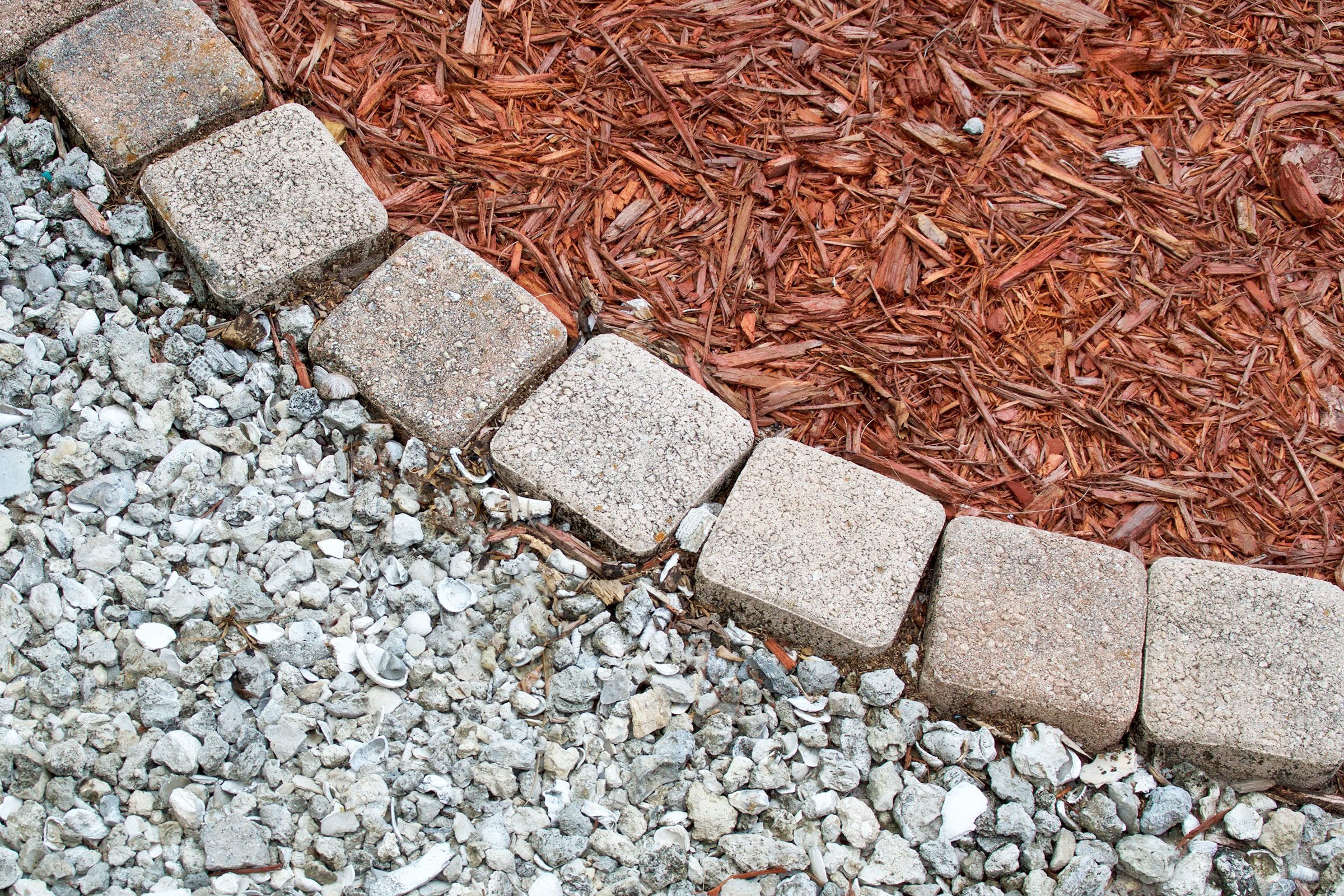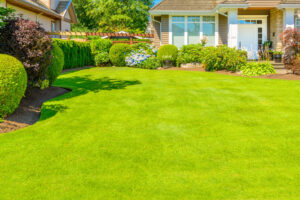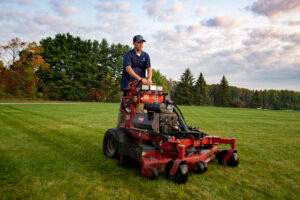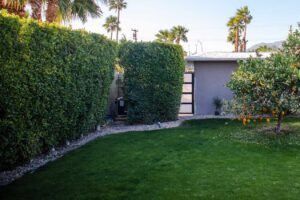Mulch Vs Rock for Landscaping: The Complete Guide
When planning your outdoor space, one decision stands out as particularly consequential for both aesthetics and functionality: should you choose mulch or rock for your landscaping needs? This choice affects not only the visual appeal of your garden beds and walkways but also impacts maintenance requirements, environmental factors, and your budget both short and long-term.
As a homeowner or landscaping enthusiast in the United States, understanding the nuances between these popular ground covering options empowers you to make an informed decision that aligns with your specific climate, property needs, and personal preferences. The US landscaping market continues to grow, with the ground covering segment representing billions in annual spending.
In this comprehensive guide, we’ll dive deep into the world of landscape coverings, comparing mulch and rock across multiple dimensions including cost, durability, maintenance, environmental impact, and aesthetic versatility. By the end, you’ll have all the information needed to choose the perfect ground covering solution for your property.
Understanding Landscape Coverings: The Basics
Before diving into detailed comparisons, let’s establish a foundation of knowledge about these two popular landscaping materials.
What Exactly Is Mulch?
Mulch refers to any material spread over the surface of soil to enhance its condition and appearance. While many people picture shredded wood when thinking of mulch, this category actually encompasses a wide variety of options:
Organic mulches include materials that decompose over time, such as:
- Shredded or chipped bark
- Wood chips
- Pine straw or needles
- Cocoa hulls
- Compost
- Leaves
- Grass clippings
- Straw
Inorganic mulches include materials that don’t decompose, such as:
- Rubber mulch (often made from recycled tires)
- Landscape fabric
- Plastic sheeting
According to the United States Department of Agriculture (USDA), using proper mulching techniques can “reduce soil moisture loss through evaporation, help inhibit weed growth, moderate soil temperatures, and prevent soil erosion.” More information on proper mulching techniques can be found on the USDA Forest Service website.
What Defines Landscape Rock?
Landscape rock (sometimes called stone mulch) encompasses a variety of stone materials used as ground covering. Common options include:
- Decorative gravel
- River rock
- Pea gravel
- Lava rock
- Decomposed granite
- Crushed limestone
- Marble chips
- Mexican beach pebbles
The United States Geological Survey (USGS) notes that crushed stone is one of the most accessible natural resources, and the nation produces about “1.5 billion tons of crushed stone valued at more than $17.8 billion” annually, a significant portion of which goes to landscaping applications.
The Core Differences at a Glance
The fundamental distinction between mulch and rock lies in their nature: organic mulch decomposes over time, contributing nutrients to the soil, while rock is permanent and inert. This basic difference influences almost every aspect of their performance as landscape coverings.
Let’s explore how this plays out across several key dimensions:
Cost Comparison: Initial Investment vs. Long-Term Value
When considering mulch versus rock, cost often becomes a deciding factor. However, to make a truly informed decision, you need to consider both the upfront costs and long-term value.
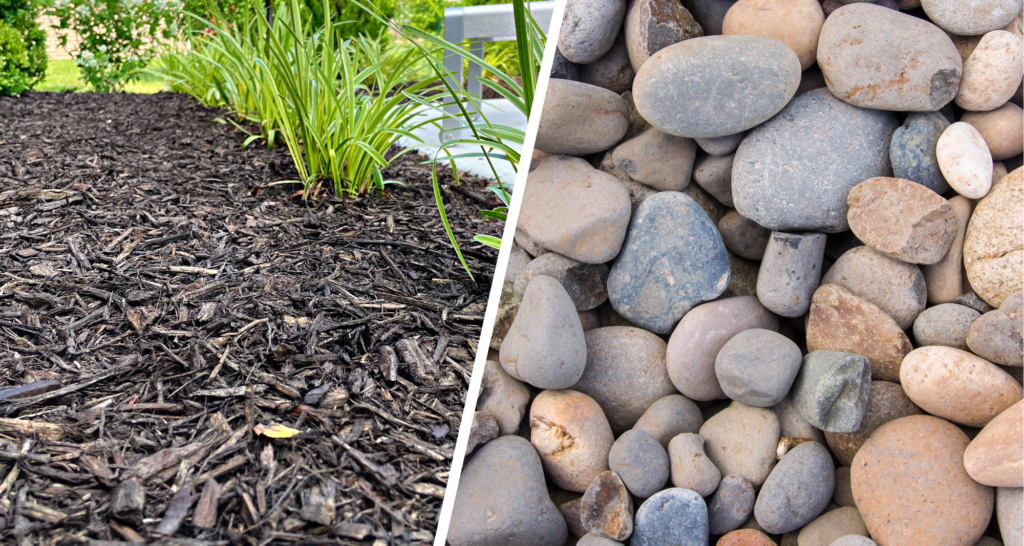
Initial Purchase and Installation Costs
The table below provides a general overview of cost ranges for common mulch and rock materials per cubic yard, based on average US pricing as of 2024:
| Material Type | Cost Per Cubic Yard | Coverage Area (1″ deep) | Labor Cost for Installation |
|---|---|---|---|
| Hardwood Mulch | $30-$60 | 324 sq. ft. | $45-$65 per hour |
| Cedar Mulch | $40-$70 | 324 sq. ft. | $45-$65 per hour |
| Rubber Mulch | $120-$200 | 324 sq. ft. | $45-$65 per hour |
| Pine Straw | $10-$20 | 324 sq. ft. | $45-$65 per hour |
| River Rock | $80-$120 | 324 sq. ft. | $50-$75 per hour |
| Pea Gravel | $35-$70 | 324 sq. ft. | $50-$75 per hour |
| Lava Rock | $90-$150 | 324 sq. ft. | $50-$75 per hour |
| Marble Chips | $100-$200 | 324 sq. ft. | $50-$75 per hour |
Note: These prices can vary significantly based on your location, supplier, quality, and quantity purchased. Installation costs may also vary based on local labor rates and complexity of the project.
As evident from the table, organic mulches generally have lower upfront costs compared to stone options, with pine straw representing the most economical choice and specialty decorative stones sitting at the premium end of the spectrum.
Long-Term Cost Considerations
While the initial investment might seem straightforward, the long-term financial implications are equally important:
For Mulch:
- Requires replenishment every 1-3 years as it decomposes
- May need additional weed control measures
- Easy to DIY, saving on labor costs for maintenance
- Contributes nutrients to soil, potentially reducing fertilizer costs
For Rock:
- One-time investment that can last decades with minimal replacement
- May require landscape fabric underneath (additional cost)
- Heavier and more difficult to DIY, potentially increasing installation costs
- Can trap heat, potentially increasing water costs for plants
- May require occasional cleaning or refreshing
According to the National Association of Landscape Professionals, “while stone mulch has a higher initial cost, its longevity often makes it more economical over a 10-15 year timeframe compared to organic mulches that need regular replacement.”
The Hidden Costs
Beyond the obvious expenses, consider these less apparent cost factors:
- Equipment needs: Rock installation often requires wheelbarrows, heavy-duty rakes, and sometimes specialized equipment for larger installations.
- Delivery fees: Stone is significantly heavier than mulch, potentially increasing delivery charges.
- Removal costs: If you change your mind, removing rock is substantially more labor-intensive and expensive than removing mulch.
- Property value impact: According to the American Society of Landscape Architects, well-designed landscaping can add 15-20% to home value, with hardscaping elements like decorative stone often providing good return on investment.
The United States Environmental Protection Agency (EPA) notes that proper landscaping choices can also impact energy costs. Their studies show that “strategic landscaping can save up to 25% of a household’s energy consumption for heating and cooling.” Their recommendations can be found on the EPA’s WaterSense program page.
Durability and Maintenance Requirements
The maintenance burden and longevity of your landscape covering directly impacts both your budget and the time you’ll spend caring for your outdoor space.
Weathering the Elements: Climate Considerations
The United States encompasses numerous climate zones, from the arid Southwest to the humid Southeast and the variable temperature ranges of the Northeast and Midwest. Your local climate should heavily influence your choice between mulch and rock.
Mulch Performance Across Climate Types:
- Hot, dry climates: Mulch provides crucial moisture retention but may decompose faster due to intense sun exposure. Select thicker layers (3-4 inches) of chunky mulches like cedar or cypress.
- Humid, rainy climates: Organic mulches break down more quickly but provide excellent moisture management. Consider pine bark nuggets which resist washing away better than finer mulches.
- Cold, snowy regions: Mulch provides excellent insulation for plant roots but may develop fungal growth in wet, cold conditions. Cedar and cypress contain natural preservatives that help them last longer.
- Windy areas: Lightweight mulches can blow away. Choose heavier options like hardwood mulch or use a tackifier spray to help lightweight mulches stay in place.
Rock Performance Across Climate Types:
- Hot, dry climates: Rocks absorb and radiate heat, which can stress nearby plants but can be beneficial for heat-loving desert species. Light-colored stones reflect rather than absorb heat.
- Humid, rainy climates: Rocks provide excellent drainage but may develop algae or moss in consistently moist conditions. Regular cleaning may be required.
- Cold, snowy regions: Rocks retain cold temperatures longer, potentially delaying spring growth. Snow removal can accidentally displace lighter stones.
- Windy areas: Stones provide excellent wind resistance. Even small pebbles remain in place during high winds.
The National Oceanic and Atmospheric Administration (NOAA) offers regional climate information that can help you determine the best landscaping materials for your specific location. Visit their Climate Prediction Center for more information.

Maintenance Schedule Comparison
The following table outlines typical maintenance requirements for mulch versus rock landscapes:
| Maintenance Task | Organic Mulch Frequency | Rock Landscape Frequency |
|---|---|---|
| Replenishment/Replacement | Every 1-3 years | Every 10-20 years |
| Weed Control | Monthly during growing season | Quarterly |
| Cleaning/Washing | Not typically required | Annually |
| Edging/Containment | Annually | Every 2-5 years |
| Pest Management | Quarterly (termites, carpenter ants) | Rarely needed |
| Soil Amendment | Happens naturally as mulch decomposes | Must be done separately |
| Raking/Redistribution | Twice yearly | Rarely needed |
| Removal of Fallen Debris | Weekly during fall | Weekly (more visible on rocks) |
The United States Department of Agriculture Natural Resources Conservation Service (NRCS) emphasizes that “proper maintenance of soil covering is essential for erosion control and water conservation.” They provide detailed guidance on soil conservation practices on their NRCS website.
The Reality of Maintenance Efforts
While the maintenance schedule provides a general framework, your actual experience will depend on several factors:
- Property location: Homes near wooded areas will see more debris on any ground covering
- Irrigation systems: Sprinkler spray can displace lightweight mulches
- Plant selection: Trees with small leaves or needles create more cleanup work on rock beds
- Edging quality: Proper edging or borders significantly reduce maintenance needs for both options
- Initial installation quality: Properly installed landscape fabric under rocks significantly reduces weed pressure
The University of California Cooperative Extension notes that “maintenance requirements should be a primary consideration in landscape design, as they represent the longest phase of landscape life.”
Environmental Impact and Sustainability
Today’s homeowners are increasingly concerned about the environmental impact of their landscaping choices. Both mulch and rock have distinct environmental profiles worth considering.
The Ecological Footprint
Mulch’s Environmental Profile:
- Carbon footprint: Organic mulches have a lower carbon footprint, especially when sourced locally.
- Water conservation: Mulch reduces evaporation by 25-50% according to studies from the University of California.
- Soil health: As organic mulches decompose, they improve soil structure and fertility.
- Habitat creation: Natural mulches support beneficial insects and soil microorganisms.
- Waste stream: Using wood mulch from tree trimmings or lumber byproducts diverts waste from landfills.
- End of life: Organic mulches completely decompose, leaving no waste.
Rock’s Environmental Profile:
- Carbon footprint: Rock mining, processing, and transportation create significantly higher emissions.
- Water dynamics: Rocks don’t absorb water, potentially increasing runoff unless properly installed.
- Soil impact: Stones don’t improve soil quality but don’t deplete nitrogen either.
- Habitat value: Limited habitat value for beneficial organisms compared to organic materials.
- Mining impacts: Stone extraction creates landscape disruption at quarry sites.
- End of life: Rocks are essentially permanent, creating potential future disposal challenges.
The Environmental Protection Agency (EPA) notes that “landscaping with native, drought-resistant plants and appropriate ground coverings can reduce outdoor water use by 20-50 percent.” More information on water-efficient landscaping can be found on the EPA’s WaterSense website.
Water Conservation Comparisons
Water usage is an increasingly important consideration for landscaping choices, particularly in drought-prone regions. Here’s how mulch and rock compare:
| Aspect | Organic Mulch | Landscape Rock |
|---|---|---|
| Moisture Retention | Excellent (reduces evaporation 25-50%) | Poor to Fair (allows water to reach soil but increases evaporation) |
| Runoff Prevention | Excellent (absorbs water) | Fair to Poor (increases runoff unless properly installed) |
| Irrigation Needs for Plants | Reduced by 25-30% | May increase due to heat reflection/retention |
| Water Quality Impact | Positive (filters pollutants) | Neutral to Positive (can be part of drainage solutions) |
| Drought Resilience | Enhances plant survival during drought | Visually unaffected by drought but doesn’t benefit plants |
| Erosion Control | Excellent on flat surfaces, good on slopes | Excellent when properly installed with stabilization |
The US Geological Survey (USGS) has extensive resources on water conservation in landscaping, noting that “landscape irrigation accounts for nearly one-third of all residential water use, totaling nearly 9 billion gallons per day.” You can find more information on their Water Science School website.
Sustainability Case Studies
Case Study 1: University of Florida Research Researchers compared mulched and rock-covered test plots for three years, finding that mulched areas:
- Required 23% less irrigation
- Supported 72% more earthworm activity
- Exhibited 10-15% higher soil organic matter
- Produced plants with 18% greater growth rates
Case Study 2: Xeriscaping in Arizona A desert landscaping project in Phoenix compared water usage between traditional grass, rock landscaping, and rock landscaping with desert-adapted plants:
- Traditional lawn: 73 gallons per square foot annually
- Rock only: 17 gallons per square foot annually
- Rock with xeriscaping: 13 gallons per square foot annually
According to the Arizona Department of Water Resources, “converting from a traditional lawn to xeriscape can save 50-75% of landscape water use while still maintaining an attractive landscape.”
Aesthetic Considerations and Design Versatility
While practical considerations matter, the visual impact of your landscape covering will affect your daily enjoyment of your property. Both mulch and rock offer distinct aesthetic qualities and design possibilities.
Color, Texture, and Visual Appeal
The Palette of Mulch Options:
Organic mulches typically come in natural earth tones ranging from light tan to deep chocolate brown, with reddish hues available in specific varieties like cedar or redwood. The color naturally darkens when wet and gradually fades as the material ages.
Texture options include:
- Fine-textured mulches (small chips or shredded material)
- Medium-textured mulches (standard bark chips)
- Coarse-textured mulches (large nuggets or chunks)
Rubber and dyed mulches expand the color palette significantly with options including bright red, black, brown, and even blue or green, though these less natural options may not blend as harmoniously with the landscape.
The Spectrum of Stone Choices:
Landscape rocks offer a much broader color spectrum, including:
- Whites and creams (marble chips, limestone)
- Tans and browns (decomposed granite, some river rocks)
- Reds and rusts (crushed brick, lava rock, rose quartz)
- Blues and grays (slate chips, bluestone)
- Blacks (black lava rock, polished pebbles)
- Multi-colored options (rainbow river rock, mixed pea gravel)
Texture variations are also extensive:
- Smooth and rounded (river rock, beach pebbles)
- Angular and jagged (crushed stone)
- Flat and stackable (slate chips)
- Porous and lightweight (lava rock)
- Fine and sand-like (decomposed granite)
Design Applications and Landscape Compatibility
Different covering materials naturally complement specific landscape styles:
Mulch Works Best With:
- Traditional landscapes
- Woodland or natural gardens
- Cottage garden styles
- Japanese-inspired landscapes
- Vegetable gardens and food forests
- Rain gardens and bioswales
- Perennial gardens
- Shade gardens
Rock Excels In:
- Modern and contemporary designs
- Mediterranean landscapes
- Desert and xeriscape designs
- Alpine gardens
- Japanese zen gardens
- Drainage features and dry creek beds
- Fire-resistant landscapes
- Coastal properties
The National Park Service, which manages landscapes in diverse settings across the United States, notes that “ground coverings should harmonize with the surrounding environment and respect the historic and natural context of the landscape.” Their guidelines for culturally appropriate landscaping can be found on the National Park Service website.
Designer Insights on Material Selection
Professional landscape designers suggest considering these aesthetic factors when choosing between mulch and rock:
- Visual weight: Rocks create a sense of permanence and solidity, while mulch appears lighter and more ephemeral.
- Seasonal appeal: Mulch changes subtly with the seasons, darkening when wet and lightening as it ages, while stone maintains consistent appearance year-round.
- Sound qualities: Rain or water features create pleasant auditory experiences when flowing over rocks, while mulch absorbs sound.
- Complementary plantings: Consider how your plants’ foliage, flowers, and growth habits will contrast with your ground covering.
- Architectural context: Your home’s architectural style should inform your material choices—contemporary homes often pair well with clean, geometric stone installations, while traditional homes may be complemented by the natural look of mulch.
The American Society of Landscape Architects emphasizes that “the most successful landscapes integrate hardscape and softscape elements in proportions appropriate to the site conditions and intended use.”
Plant Health and Growth Impact
The ground covering you choose doesn’t just sit beneath your plants—it actively influences their health, growth, and long-term success.
Root Zone Conditions and Plant Development
The environment immediately surrounding plant roots significantly impacts overall plant health. Here’s how mulch and rock affect this critical zone:
Mulch Effects on the Root Zone:
- Temperature moderation: Organic mulches insulate soil, keeping it cooler in summer and warmer in winter. Research from Washington State University shows that mulched soils can be 8-13°F cooler during peak summer heat.
- Microbial activity: Organic mulches foster beneficial fungi, bacteria, and other microorganisms that support plant health. Studies from the University of California show that mulched soils contain up to 400% more beneficial microorganisms than bare soil.
- Nutrient cycling: As mulch decomposes, it releases nutrients directly to the root zone. A 3-inch layer of hardwood mulch can release approximately 0.7 pounds of nitrogen per 100 square feet annually as it breaks down.
- Soil structure: Decomposing mulch improves soil porosity and structure over time, enhancing root penetration and development.
Rock Effects on the Root Zone:
- Temperature fluctuations: Rocks can absorb and radiate heat, potentially causing soil temperature extremes. Dark stones in full sun can raise soil temperatures by 15-20°F compared to mulched areas.
- Microbial limitations: Rock coverings don’t support microbial communities as effectively, potentially reducing natural disease suppression.
- Nutrient stability: While rocks don’t add nutrients, they also don’t temporarily tie up nitrogen during decomposition as fresh wood mulches sometimes do.
- Soil compaction: The weight of stone can gradually compact soil underneath, potentially restricting root growth and water penetration.
According to research published by the United States Department of Agriculture, “soil temperature is one of the most critical factors affecting root growth, with most garden plants’ roots growing optimally between 65°F and 75°F.” Their research on optimal soil conditions can be found on the USDA Agricultural Research Service website.

Plant Type Compatibility Guide
Not all plants thrive equally well with either covering. The table below offers guidance on which plants tend to perform better with each material:
| Plant Type | Better with Mulch | Better with Rock | Notes |
|---|---|---|---|
| Acid-loving shrubs (azaleas, rhododendrons) | ✓ | Benefit from acidic pine needle or oak leaf mulch | |
| Mediterranean herbs (lavender, rosemary, thyme) | ✓ | Prefer sharper drainage and reflected heat | |
| Vegetables and annuals | ✓ | Benefit from nutrient release and moisture retention | |
| Native prairie plants | ✓ | Often evolved in rocky, well-drained conditions | |
| Woodland perennials (hostas, ferns) | ✓ | Mimic their natural forest floor environment | |
| Succulents and cacti | ✓ | Require excellent drainage and benefit from thermal mass | |
| Fruit trees | ✓ | Benefit from consistent moisture and nutrients | |
| Alpine and rock garden plants | ✓ | Naturally adapted to rocky environments | |
| Roses | ✓ | Traditional rose care includes organic mulching | |
| Ornamental grasses | ✓ | Many species prefer well-drained conditions |
The United States National Arboretum, which conducts extensive research on plant growth and cultivation, notes that “selecting the right ground covering for specific plant communities is as important as proper planting technique for long-term landscape success.” Their plant care guidance can be found on the U.S. National Arboretum website.
Special Considerations for Trees
Trees represent significant landscape investments and deserve special consideration when choosing ground coverings. Research from the International Society of Arboriculture highlights these findings:
- Trees mulched with organic materials show 20-35% faster growth rates than those surrounded by rock or bare soil.
- A common mistake is “volcano mulching” (piling mulch against tree trunks), which can cause bark decay. Instead, maintain a 2-3 inch mulch depth, keeping material pulled back several inches from the trunk.
- Rock mulch near trees increases reflected heat on lower trunks, potentially causing sunscald on sensitive species.
- The ideal mulch ring for trees extends to the drip line (outer edge of the canopy) or beyond.
- If using rock near trees, select larger stones at least 1-2 inches in diameter to allow water and air penetration to roots.
The USDA Forest Service research indicates that “proper mulching is one of the most beneficial practices for tree health in landscape settings, reducing water stress and mechanical damage while improving soil biology.” Their comprehensive tree care information can be found on the USDA Forest Service website.
Practical Applications: Choosing the Right Material for Specific Landscape Features
Different areas of your landscape have distinct requirements, and the optimal ground covering choice varies accordingly. This section breaks down recommendations for specific landscape features.
Garden Beds and Planting Areas
For Perennial Beds: Organic mulch generally performs better in perennial beds because:
- It adds organic matter as it breaks down
- It’s easy to plant through when adding new specimens
- It complements the natural appearance of flowering plants
- It doesn’t interfere with the emergence of self-seeding plants
However, some perennials that prefer very dry conditions, such as Mediterranean herbs or rock garden plants, may perform better with stone mulch.
For Annual Beds: Organic mulch is almost always preferable for annual beds because:
- Beds are replanted frequently, and mulch is easier to work with
- Annuals typically need more moisture and nutrients
- Fresh mulch provides a clean backdrop for seasonal displays
- There’s less risk of mulch particles being mixed into the soil during frequent replanting
For Vegetable Gardens: Organic mulch is strongly recommended for vegetable gardens:
- Straw, grass clippings, or leaf mold are particularly effective
- These materials break down quickly, adding nutrients throughout the growing season
- They keep vegetables clean and reduce soil-borne diseases
- They can be tilled into the soil at season’s end, improving soil structure
The National Gardening Association states that “vegetable yields can increase 15-25% with proper organic mulching compared to bare soil cultivation.” Their vegetable gardening resources can be found on the National Gardening Association website.
Pathways, Walkways, and High-Traffic Areas
Stone and rock materials generally outperform mulch in pathways for several reasons:
- Greater durability under foot traffic
- No muddy patches after rain
- Reduced displacement compared to lighter mulches
- Cleaner surface that doesn’t cling to footwear
- Better definition of edges and boundaries
For pathway applications, consider these specific options:
- For formal paths: Uniform crushed stone (⅜” or smaller) provides a smooth, consistent surface
- For casual garden paths: River rock or pea gravel offers natural appearance with good drainage
- For connecting major landscape features: Stepping stones set in decomposed granite create stable footing
- For wheelchair accessibility: Compacted decomposed granite provides a firm surface that meets many accessibility requirements
The Access Board, which develops federal accessibility guidelines, notes that “stable, firm, and slip-resistant ground surfaces are essential for accessible outdoor paths.” Their guidance can be found on the United States Access Board website.
Around Trees and Shrubs
The area around woody plants presents unique considerations:
For Newly Planted Trees:
- Organic mulch in a 3-4 foot diameter circle (minimum)
- Keep mulch 2-3 inches away from trunk to prevent rot
- 2-4 inch depth, tapering thinner toward the trunk
- Replenish annually as mulch breaks down
For Mature Trees:
- Mulch rings ideally extending to the drip line
- Consider replacing turf under trees with mulched beds to reduce competition
- Avoid raising soil level around existing trees when applying mulch
For Shrub Borders:
- 2-3 inch organic mulch depth for most shrubs
- For acid-loving shrubs, pine needle mulch helps maintain soil pH
- For drought-tolerant shrubs, consider a mixed approach: stone mulch at the bed edges transitioning to organic mulch around plant bases
The Arbor Day Foundation, America’s largest non-profit dedicated to trees, emphasizes that “proper mulching is one of the most important ways to ensure tree health in landscape settings.” Their tree care guides can be found on the Arbor Day Foundation website.
Water Features and Drainage Areas
Areas with water management functions have specialized needs:
For Rain Gardens:
- Organic mulch in the central basin (shredded hardwood works well)
- River rock or cobble at inlet and outlet points to prevent erosion
- For steep slopes within the rain garden, a combination approach works well: stone in areas of concentrated flow transitioning to mulch in gentler areas
For Dry Creek Beds:
- Various sizes of river rock and cobble create a natural appearance
- Larger stones (4-8 inches) define the creek edges
- Medium stones (2-4 inches) form the creek bed
- Smaller pebbles (½-1 inch) fill gaps between larger stones
For Pond Edges:
- Smooth river rock prevents erosion while looking natural
- Avoid organic mulch that could wash into the pond and decompose
- Consider larger flat stones that extend slightly over the water edge
The Environmental Protection Agency provides comprehensive guidance on rain garden construction and maintenance, noting that “properly designed and maintained rain gardens can capture up to 40% more runoff than a standard lawn.” Their water management resources can be found on the EPA’s Green Infrastructure website.

Special Situations and Creative Solutions
Beyond the standard applications, there are special circumstances and innovative approaches that might influence your choice between mulch and rock.
Challenging Landscapes and Problem-Solving
Steep Slopes
Erosion control becomes paramount on hillsides and steep terrain. Here’s how the options compare:
Mulch on Slopes:
- Shredded hardwood mulch interlocks and resists washing away better than wood chips
- Erosion control blankets topped with mulch provide excellent stability
- Cocoa hull mulch binds together when wet, offering good erosion resistance
- All organic mulches eventually decompose, requiring regular replenishment
Rock on Slopes:
- Angular stones (¾” to 1½”) lock together better than rounded pebbles
- Larger stones (3″+) provide the most stability but may look unnatural
- Landscape fabric underneath is essential for slope stabilization
- Stone provides permanent erosion control with minimal maintenance
The Natural Resources Conservation Service (NRCS) recommends that “slopes greater than 3:1 (33% grade) generally require specialized erosion control measures beyond standard mulching.” Their technical guidance on erosion control can be found on the NRCS website.
Fire-Prone Areas
In regions with wildfire risk, your ground covering choice affects your property’s defensibility. According to the National Fire Protection Association:
- Rock landscaping creates effective fuel breaks around structures
- Organic mulch should be kept at least 5 feet away from home foundations in fire-prone regions
- If using mulch in fire-prone areas, composted wood chips are preferable to shredded bark (which ignites more easily)
- Rubber mulch should never be used in fire-risk zones due to high flammability
The United States Forest Service Fire Lab testing shows that “inorganic mulches such as stone or gravel are ideal choices for the 0-5 foot zone immediately surrounding structures in wildfire-prone areas.” Their recommendations for creating defensible space can be found on the USFS Wildfire Risk Reduction website.
Problematic Soils
Different ground coverings can help address specific soil challenges:
For Clay Soils:
- Organic mulches help improve soil structure over time
- Acidic mulches like pine needles can help reduce alkalinity common in clay
- Stones may compound drainage issues unless proper preparation is done
For Sandy Soils:
- Organic mulches add needed organic matter and improve water retention
- Compost-based mulches provide nutrients often lacking in sandy soils
- Rock mulch can prevent wind erosion but does nothing to improve soil quality
The United States Department of Agriculture Soil Conservation Service provides region-specific guidance on soil amendments and ground coverings, noting that “improving soil health should be considered alongside aesthetic and practical concerns when selecting landscape materials.” Their soil health resources can be found on the USDA Natural Resources Conservation Service website.
Innovative and Mixed Approaches
Rather than choosing strictly between mulch or rock, many successful landscapes incorporate both materials strategically:
Layered Applications
Some landscapers use stone as a base layer with a thin organic mulch top dressing, combining benefits:
- The stone provides long-term weed suppression and drainage
- The organic mulch adds aesthetic warmth and soil benefits
- The organic layer can be easily refreshed without disturbing the stone base
Zoned Approaches
Different areas of the landscape receive different treatments based on specific needs:
- Rock near home foundations for fire protection and termite prevention
- Organic mulch in planting beds for plant health
- Decorative gravel in specimen plant areas for focal emphasis
- Wood chips in play areas for safety
Artistic Combinations
Creative designs use both materials as design elements:
- Stone edging containing organic mulch beds
- Dry stream beds of river rock winding through mulched planting areas
- Islands of specimen plants in stone mulch surrounded by larger mulched beds
- Stepping stones set within wood chip pathways
The American Society of Landscape Architects showcases innovative ground covering applications in their annual design awards, demonstrating that “the most successful landscapes often utilize multiple ground covering strategies tailored to specific microclimates and functional zones within the overall design.” Their design resources can be found on the ASLA website.
Making Your Final Decision
After considering all the factors, how do you make the right choice for your specific landscape? This section provides a practical framework for decision-making.
